The Influence of Crossdressing on Mainstream Fashion
This practice of crossdressing and wearing clothing traditionally associated with the opposite sex has profoundly impacted mainstream fashion, revolutionizing the industry and redefining our understanding of gender. From the runway to everyday wardrobe choices, crossdressing has sparked a wave of inclusivity, inspiring designers, retailers, and individuals to embrace a more fluid approach to personal style. Let’s have a peek into a wardrobe that refuses to conform, a sartorial revolution that’s been turning heads and challenging norms for centuries.
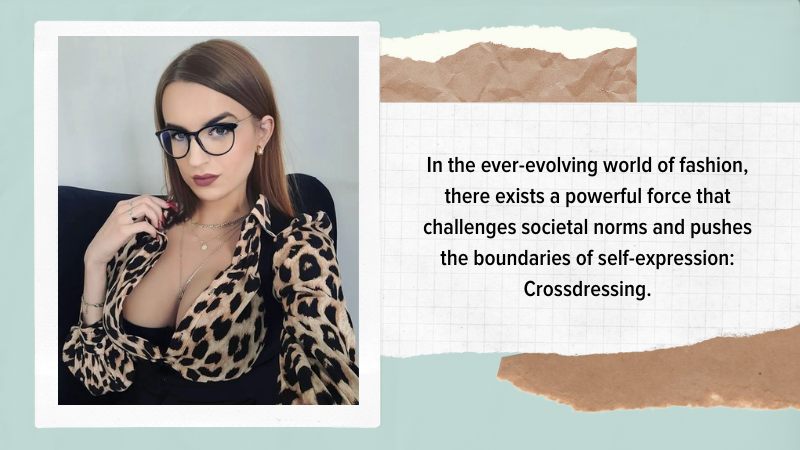
In this blog, we will explore the influence of crossdressing on mainstream fashion, uncovering its transformative power and the profound social and cultural implications it carries. Join us as we celebrate the fearless individuals and visionary designers who have reshaped the fashion landscape, blurring the lines between masculinity and femininity, and embracing the freedom of self-expression.
Early Influences of Crossdressing on Fashion
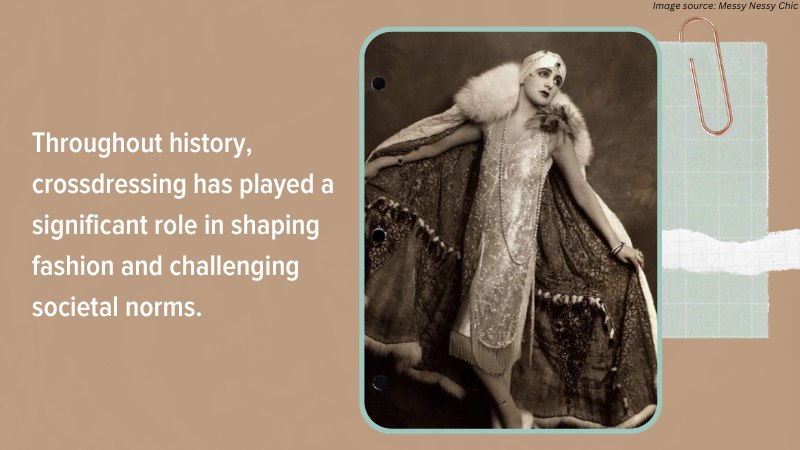
Throughout history, crossdressing has played a significant role in shaping fashion and challenging societal norms.
As early as ancient civilizations, we can find examples of crossdressing in various forms.
In ancient Egypt, pharaohs would adorn themselves in elaborate headdresses, jewelry, and garments that blurred the lines between genders.
Similarly, during the Elizabethan era, men of noble birth would wear lavish, ornate garments, often including skirts and lace, demonstrating a willingness to embrace and experiment with different styles.
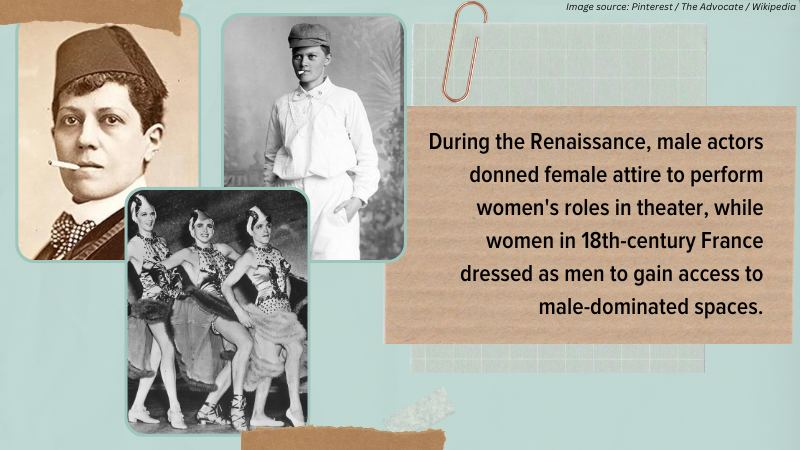
During the Renaissance, male actors donned female attire to perform women’s roles in theater, while women in 18th-century France dressed as men to gain access to male-dominated spaces.
The 19th-century “dandy” movement saw men adopting traditionally feminine styles, while the 20th century brought forth iconic figures like Marlene Dietrich and David Bowie, who blurred gender lines with their fashion choices.
Overall, crossdressing has been a driving force in the evolution of fashion, promoting self-expression and challenging gender norms.
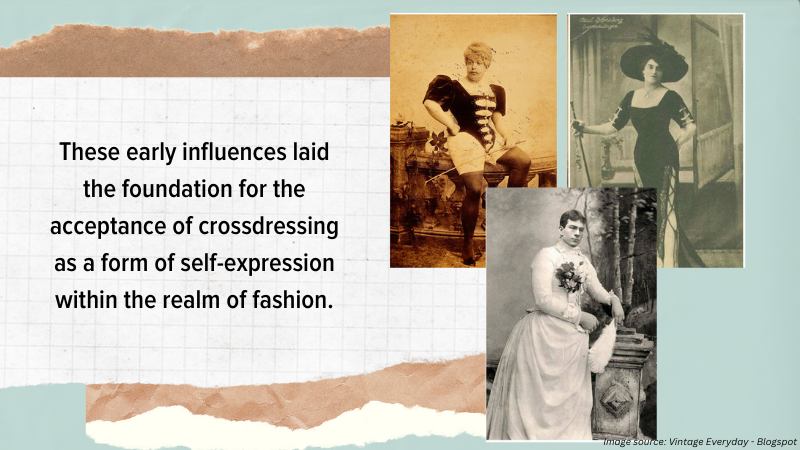
These early influences laid the foundation for the acceptance of crossdressing as a form of self-expression within the realm of fashion.
They set the stage for future generations to explore and reimagine traditional gender roles, ultimately leading to the inclusive and diverse fashion landscape we witness today.
Crossdressing and the Rise of Androgynous Fashion
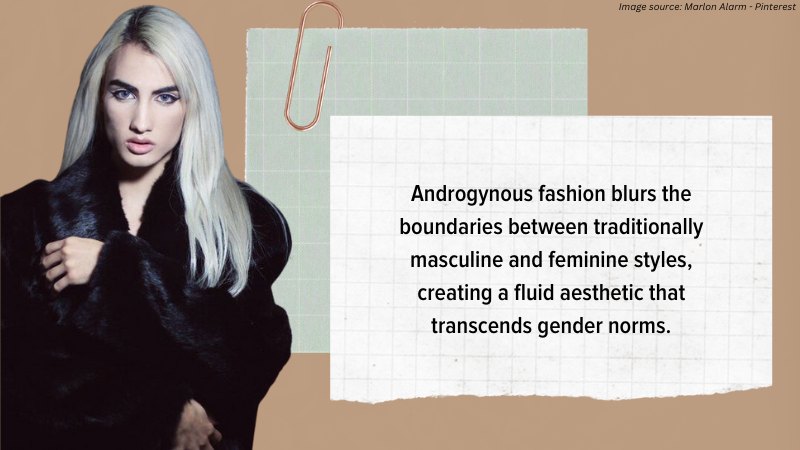
In recent years, the fashion industry has experienced a remarkable shift towards androgyny, inspired in large part by the art of crossdressing.
Androgynous fashion blurs the boundaries between traditionally masculine and feminine styles, creating a fluid aesthetic that transcends gender norms.
Crossdressing has played a pivotal role in challenging the notion that clothing should be restricted to one’s assigned gender.
It has encouraged designers to experiment with silhouettes, fabrics, and colors, resulting in the rise of gender-neutral garments that appeal to a broader spectrum of individuals.
Androgynous fashion, which embraces a blend of both masculine and feminine styles, has gained popularity over the years, with numerous examples found in pop culture and fashion runways.
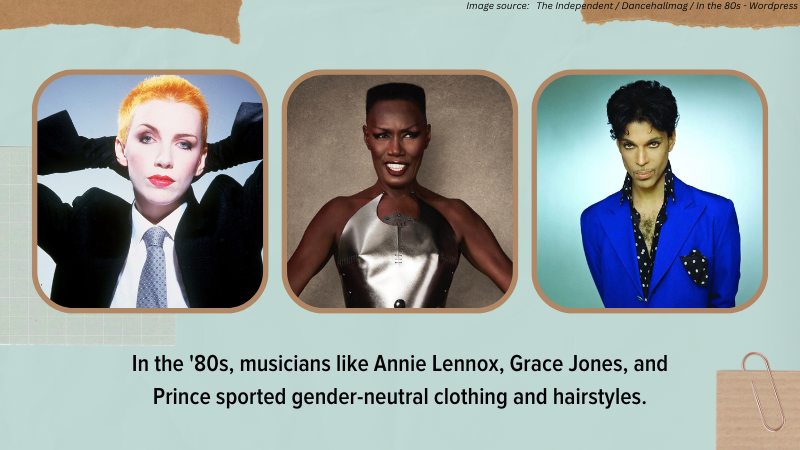
Some iconic instances include the 1960s mod movement, where Twiggy popularized short hairstyles and slim silhouettes for both sexes and the ’70s glam rock era, with David Bowie’s alter ego Ziggy Stardust donning makeup and flamboyant outfits.
In the ’80s, musicians like Annie Lennox, Grace Jones, and Prince sported gender-neutral clothing and hairstyles, while the ’90s saw the rise of the grunge movement, characterized by oversized flannel shirts and loose-fitting jeans.
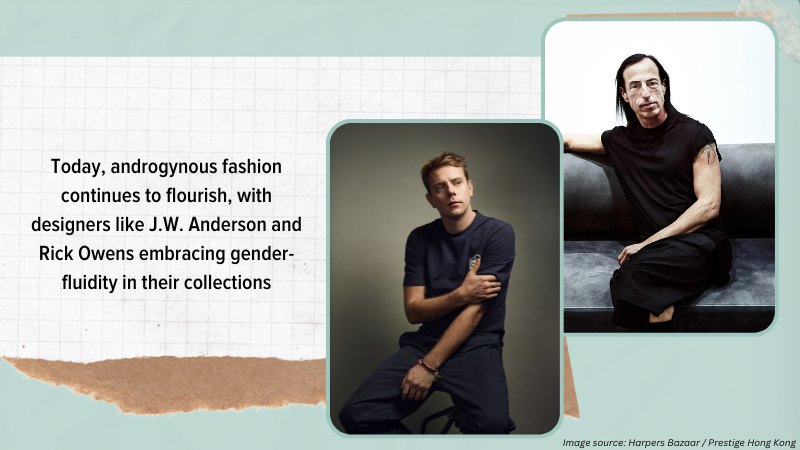
Today, androgynous fashion continues to flourish, with designers like J.W. Anderson and Rick Owens embracing gender-fluidity in their collections, and celebrities such as Janelle Monáe and Tilda Swinton showcasing their unique, non-binary style on the red carpet.
Androgynous fashion has become a powerful symbol of inclusivity and self-expression, allowing people to embrace their unique identities without conforming to societal expectations.
Gender-Fluid and Non-Binary Fashion
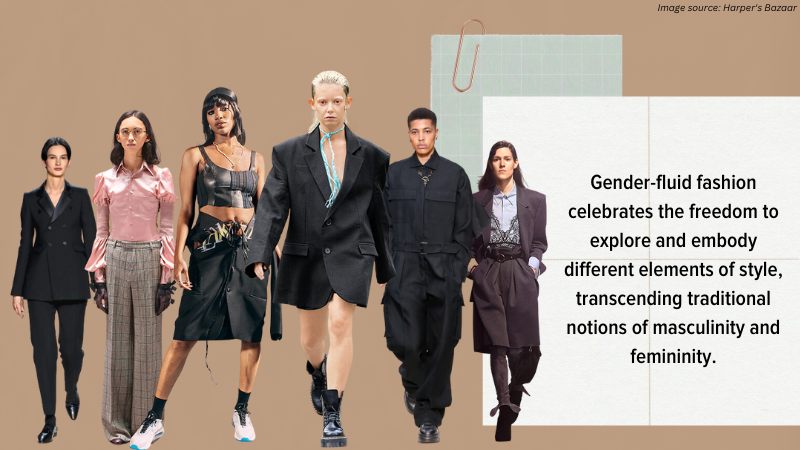
In the ongoing quest for inclusivity and representation within the fashion industry, gender-fluid and non-binary fashion has emerged as a transformative force.
It challenges the binary construct of gender and offers a platform for individuals to express themselves authentically, regardless of societal expectations.
Gender-fluid fashion celebrates the freedom to explore and embody different elements of style, transcending traditional notions of masculinity and femininity.
This movement has given rise to a diverse range of garments that defy gender norms, featuring fluid silhouettes, unisex designs, and a fusion of fabrics, patterns, and colors.
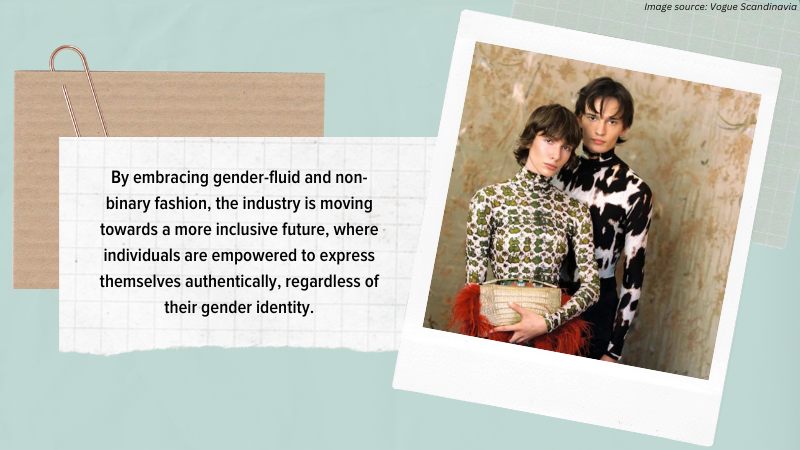
Non-binary fashion, on the other hand, celebrates identities that exist outside of the male-female binary, creating space for individuals to define their own unique style without conforming to societal norms.
By embracing gender-fluid and non-binary fashion, the industry is moving towards a more inclusive future, where individuals are empowered to express themselves authentically, regardless of their gender identity.
This progressive shift is not only reshaping the fashion landscape but also paving the way for a society that embraces diversity and celebrates the beautiful complexity of human identity.
High Fashion and Runway Shows
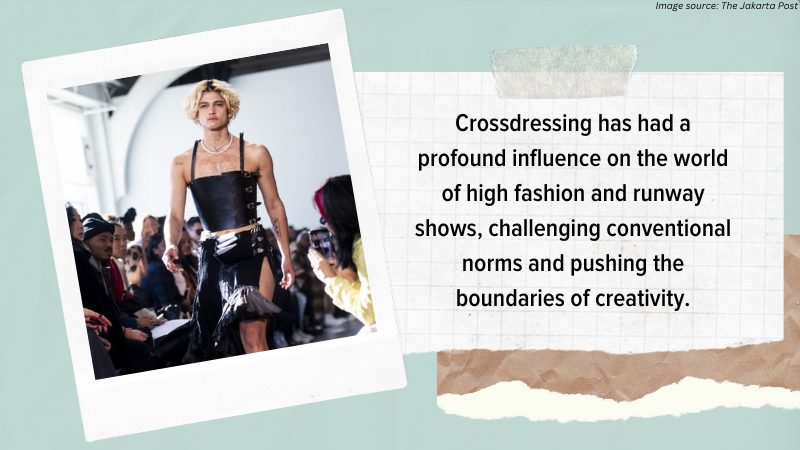
Crossdressing has had a profound influence on the world of high fashion and runway shows, challenging conventional norms and pushing the boundaries of creativity.
Designers have embraced crossdressing as a powerful tool to disrupt traditional gender roles and create groundbreaking collections that defy expectations.
In high fashion, runway shows have become platforms for designers to showcase gender-fluid and androgynous designs, blurring the lines between masculinity and femininity.
Crossdressing has inspired designers to experiment with unconventional silhouettes, incorporating elements traditionally associated with one gender into garments intended for the opposite.
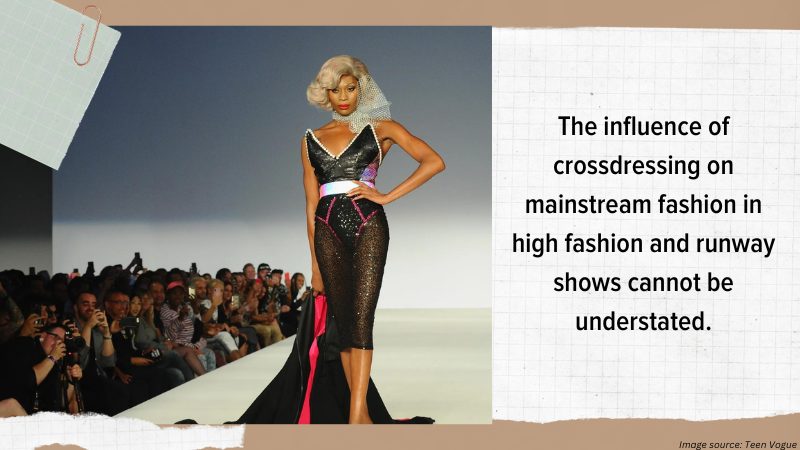
The result is a dynamic fusion of styles, where traditional notions of gender are deconstructed and reimagined.
These bold and progressive collections not only captivate audiences but also set the tone for broader fashion trends, inspiring a shift towards inclusivity and self-expression in the industry.
The influence of crossdressing on mainstream fashion in high fashion and runway shows cannot be understated, as it continues to reshape the fashion landscape and redefine our understanding of gender and style.
Celebrity Influences
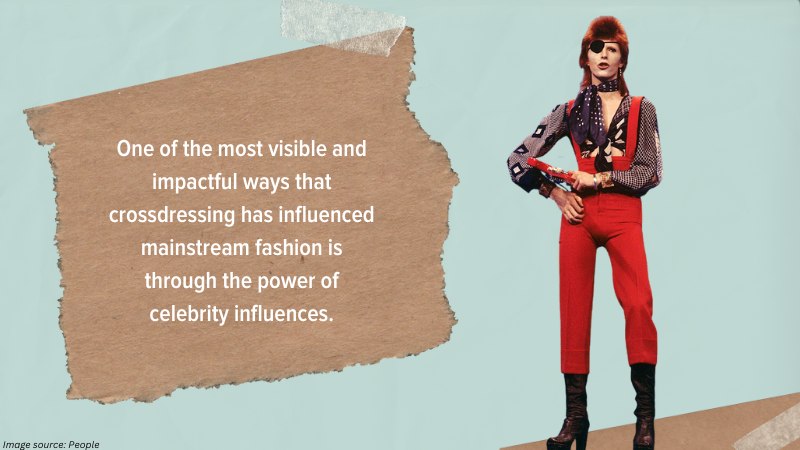
One of the most visible and impactful ways that crossdressing has influenced mainstream fashion is through the power of celebrity influences.
Celebrities, with their large platforms and immense influence, have played a significant role in challenging traditional fashion norms and promoting the acceptance of crossdressing.
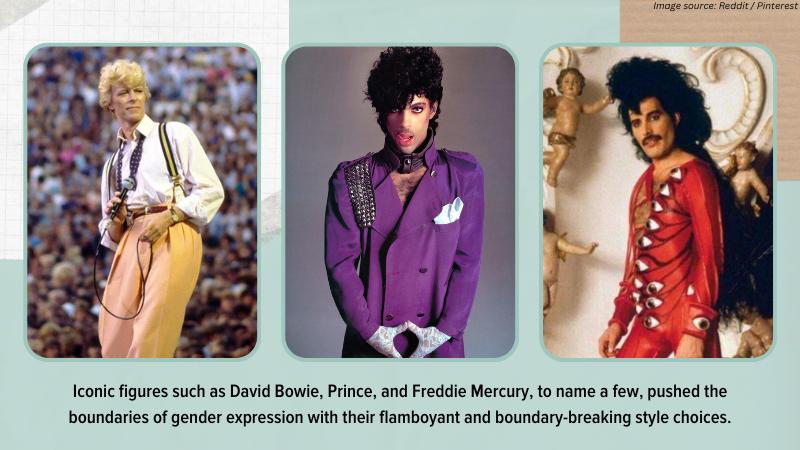
Iconic figures such as David Bowie, Prince, and Freddie Mercury, to name a few, pushed the boundaries of gender expression with their flamboyant and boundary-breaking style choices.
Their fearless embrace of crossdressing on and off the stage not only captivated audiences but also inspired a new generation of artists, fashion designers, and fans to embrace their own unique expressions of self.
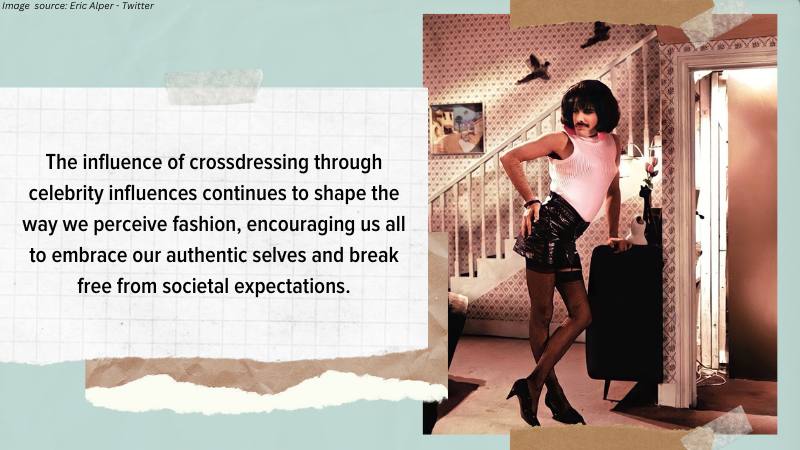
Today, we see celebrities of all genders challenging societal norms by openly embracing crossdressing, advocating for inclusivity, and blurring the lines of gender through their fashion choices.
By doing so, these celebrities have helped normalize and celebrate the diversity of gender expression, paving the way for a more inclusive and accepting mainstream fashion industry.
The influence of crossdressing through celebrity influences continues to shape the way we perceive fashion, encouraging us all to embrace our authentic selves and break free from societal expectations.
Conclusion
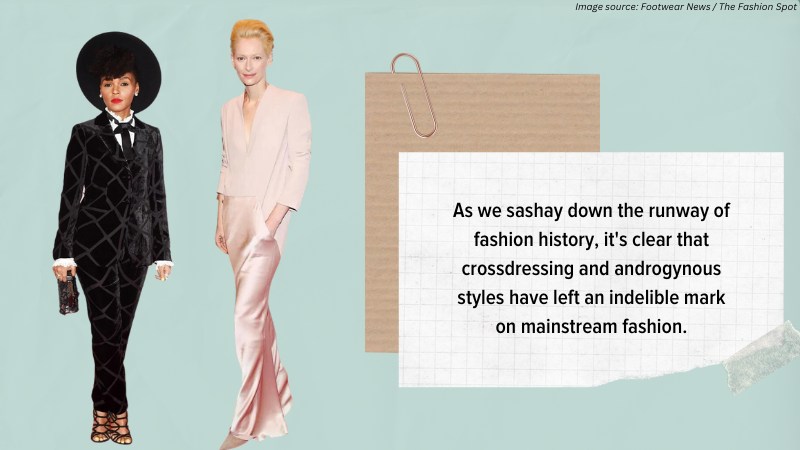
As we sashay down the runway of fashion history, it’s clear that crossdressing and androgynous styles have left an indelible mark on mainstream fashion.
From ancient civilizations to modern-day red carpets, these daring trailblazers have challenged the status quo, encouraging us all to embrace our individuality and break free from the constraints of traditional gender norms.
So, the next time you spot a dapper dandy or a chic, androgynous ensemble, remember to tip your (gender-neutral) hat to the fabulous pioneers who dared to defy expectations and redefine what it means to be fashionable.
After all, as the legendary David Bowie once said, “I don’t know where I’m going from here, but I promise it won’t be boring.” Here’s to a future of fashion that celebrates the beauty of self-expression, diversity, and the fabulous influence of crossdressing!
- A Beginner’s Guide to Anime Femboy Crossdressing
- 7 Roleplay Chat Tips to Ignite Your Crossdressing Fantasies
- Embracing Femininity: A Journey into Voluntary Crossdressing
- Beginners Guide for a Mature Crossdresser
- How to Navigate Crossdressing in Religious Societies: A Guide for Beginner Crossdressers
- How Accepting Are Italian People of the Transgender Community?
Established in 2009, We are a recognized manufacturer and seller of professional crossdressing products.
It is our aim to become not just the most creative manufacturer but also a very considerate seller, as we provide the best quality products for crossdressers all around the world.

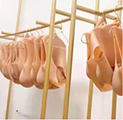







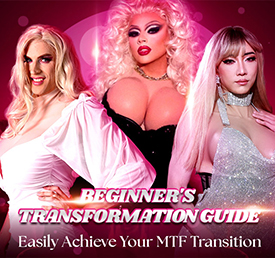


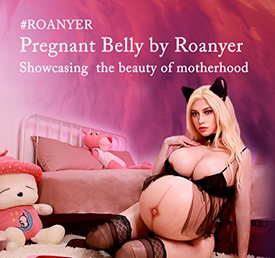





 Breast Forms
Breast Forms  Body Suit
Body Suit  Realistic Mask
Realistic Mask  Femini Girdle
Femini Girdle Hip & Butt Enhancement (8)
Hip & Butt Enhancement (8) Penis Prosthesis
Penis Prosthesis Fake Muscle
Fake Muscle Bikini
Bikini  Wig
Wig  Corsets
Corsets Course
Course service@roanyer.com
service@roanyer.com +8618652200711
+8618652200711 Facebook
Facebook YouTube
YouTube Twitter
Twitter Instagram
Instagram




